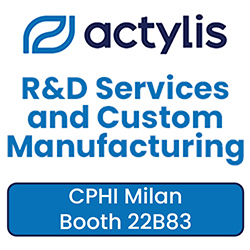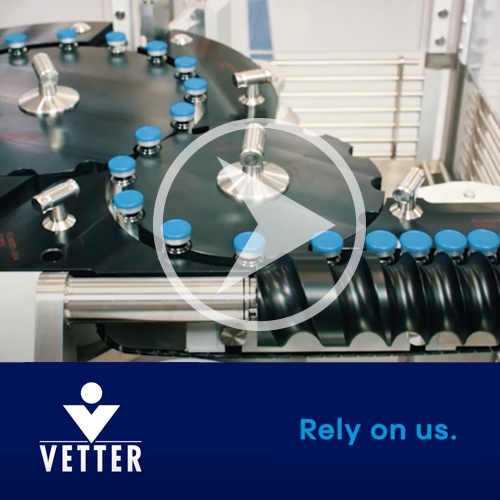Lonza: Utilizing Analytical Tools & Predictive Models to De-Risk Drug Development


Josh Marsh, Bioavailability Enhancement & PBPK Lead Scientist, Lonza
The high risk of failure, combined with the significant investment of time, labor, and financial resources in each new drug candidate, presents a constant challenge for drug developers. To maximize development efficiency and ensure safe, effective, and reliable products for patients, drug developers seek a strategic partner to help de-risk the process at every stage. Overcoming these challenges often requires the expertise of a contract drug manufacturing organization (CDMO), who can provide support from the earliest stages of development through commercialization. With advanced technologies, predictive tools like PBPK modeling, and deep experience, CDMOs can improve dissolution rates, solubility, and overall bioavailability, helping guide drug developers from candidate compound to clinical success.
Drug Development & Delivery recently interviewed Josh Marsh, Bioavailability Enhancement and PBPK Lead Scientist at Lonza, to discuss the benefits of predictive tools and Lonza’s approach.
Q: What challenges do drug developers face in early development?
A: Drug development continues to advance our understanding about causes of disease, as well as to innovate therapeutic modalities. Yet, the process remains time intensive, costly, and high risk. The average drug takes over 10 years and $1 billion-$2 billion to be approved for clinical use — yet 90% of new drugs reaching Phase 1 clinical trials ultimately fail to reach approval.1
This high risk of failure, along with the substantial investment of time, labor, and financial resources allocated to every new drug candidate, poses a persistent challenge for drug developers. For example, when a problem with the shelf stability of a drug product is discovered while clinical trials are already underway, development progress stops, and all batches of the drug product must be reworked. Ultimately, these delays impact patients getting access to innovative treatments.
To ensure the efficient use of development resources and the creation of safe, effective, and reliable products for patients, it is essential for drugmakers to find a strategic partner, such as a CDMO, with expertise to help to de-risk development at every step.
Q: Poorly soluble molecules are becoming more prevalent in early phase development. What tools and strategies can be used to enhance formulation?
A: The earliest phases of clinical development are critical and within the past 5 years, we have seen an increase in poorly soluble molecules. CDMOs also are faced with the challenge to develop new and innovative approaches that help the drug developers’ journey from clinical to scale-up.
To tackle this issue, one effective strategy involves the use of PBPK modeling. This tool can simulate the dissolution, absorption, distribution, and clearance rates of a drug in the body, helping to identify potential solubility-related issues early in the development process. By providing insights into the underlying mechanisms of drug absorption, distribution metabolism, and clearance, PBPK models help enhance formulation in early phase development.
To build on the insights gained from PBPK modeling, combining it with biorelevant in vitro dissolution testing offers additional advantages to the formulation and API form (salt, co-crystal, etc) screening process. In instances of a molecule being flagged for a particular absorption risk in silico, the risk can be further assessed in vitro to understand the relative impact on solubilization, dissolution, and precipitation. Additionally, an understanding of the potential for an enabled formulation or API form to overcome the identified risk relative to the free form can be developed. The in vitro data can then be incorporated into the in silico model, further refining the understanding of the molecule and potential strategies of progressing a molecule into preclinical and clinical studies.
In addition to PBPK modeling, high-throughput experimentation (HTE) for drug substance is another valuable tool. HTE facilitates the miniaturization and parallelization of chemical reactions, allowing for the rapid testing of a broad spectrum of reagents, solvents, catalysts, and conditions. It enables the assessment of various routes, thereby increasing the likelihood of identifying optimal conditions early in the project’s timeline.
Q: Drug development is notoriously high risk and expensive. How can the integration of tools like PBPK modeling, solid form screening, and retrosynthetic analysis significantly improve the odds of success for a drug candidate?
A: Drug development is a complex and high-risk endeavor, fraught with challenges in the earliest stages of development that can lead to costly hurdles. Key sources of risk include toxicity, drug-drug or food-drug interactions, poor solubility, low bioavailability, and insufficient potency. Additionally, intellectual property constraints, regulatory hurdles, and supply chain disruptions can pose significant challenges.
To increase the likelihood of success, developers must proactively address risks related to safety, efficacy, and manufacturability. One approach is utilizing advanced computational tools, such as PBPK modeling. PBPK modeling helps predict a drug’s ADME (absorption, distribution, metabolism, excretion) profile, enabling more informed decision-making in preclinical and clinical development. Another approach is solid form screening to ensure drug stability and bioavailability by optimizing the physical properties of the drug for formulation. Lastly, retrosynthetic analysis can enhance synthetic route design, leading to more efficient, scalable, and cost-effective production.
By integrating these tools, developers can de-risk critical steps in the drug development lifecycle, increasing the chances of bringing safe, effective therapies to market. Lonza’s Small Molecules division offers a comprehensive suite of tools and expertise to support clients throughout the entire drug development process, from candidate selection to final product.
Q: Solid form screening is often overlooked in early drug development. Why is it crucial to invest in this process early on, and what impact can it have on the overall development timeline and cost?
A: Solid form screening involves the search, preparation, and characterization of different solid forms of an active pharmaceutical ingredient (API). This process includes selecting a preferred form, designing methods to isolate that form, and ensuring the lead form’s stability and performance. Researchers must also identify a compound’s possible polymorphs, which are different molecular arrangements in the crystalline lattice.
Investing in solid form screening early in the development process is crucial for several reasons. Firstly, it helps identify the lead form of an API, which is essential for the drug’s stability, solubility, dissolution rate, and overall manufacturability. By selecting an optimal solid form early on, developers can significantly shorten the development timeline and reduce costs.
Moreover, solid form screening provides valuable insights that extend beyond selecting a lead form. It aids in de-risking and optimizing every stage of drug development, from lead form identification to intellectual property (IP) protection. This comprehensive approach ensures the chosen solid form will perform well throughout the drug’s lifecycle, ultimately leading to a more efficient and cost-effective development process.
Q: How does retrosynthetic analysis contribute to the overall efficiency of drug development? Can you share examples of how this tool has helped accelerate the discovery and development of new drug candidates?
A: The emergence of sophisticated therapeutic modalities, such as induced proximity technologies and synthetic nucleic acid therapeutics, bring more complexity to the drug development process. Consequently, process chemists frequently encounter new molecular entities (NMEs) whose preparation demands over 20 synthetic steps — a sharp contrast from the roughly 8-step average observed nearly 2 decades ago. This added synthetic complexity becomes a major challenge for small and emerging biotechnology companies in the earliest stages of development, as each synthetic step requires extensive development and optimization before scale-up.
To address this, pharmaceutical and cheminformatics innovators developed advanced computer-aided synthesis planning tools (CSPTs) to defray the impacts of finding first-generation process routes to complex targets. For instance, when chemists provide a molecule target to a CSPT, the software estimates the shortest—from the target back to available starting materials—with the highest probability of success, thus improving efficiency.
At Lonza, we combine our extensive proprietary commercial data in a leading computer-aided synthesis planning technology. Using this technology, which is enabled by artificial intelligence, process research and development experts can deliver synthetic pathways in full consideration of real-world raw material costs and availability, along with actionable supply chain information. This results in direct synthetic pathways to their drug candidates, have more resilient raw material supply chains, and experience accelerated process R&D start-up times.
Q: Given the increasing complexity of drug molecules, how do you see the role of these predictive tools evolving in the future? What new capabilities or applications might we expect to see?
A: In terms of industry impact, we expect PBPK modeling to continue to grow in popularity with sponsors, CDMOs, and regulatory agencies. The mechanistic approach required to develop a PBPK model allows us to have a deeper understanding of the critical properties of a molecule or formulation. This provides perspective on whether an API is likely to make it to clinical or commercial stages.
Regarding new capabilities for analysis, we can foresee retro-synthesis becoming more sophisticated in the coming years, especially given the current prevalence of AI-enabled technology. AI may help retrosynthetic analysis tools handle large data sets more efficiently, resulting in more unique solutions to client needs.
Lastly, as the structural complexity of molecules in development increases, predictive methods relying upon structure-activity relationship may fall short in terms of predicting critical ADME properties. Alternative screening methods will be needed to understand parameters such as permeability, clearance, and first-pass metabolism. For example, organ on a chip (OoC) assay, which have existed for over 20 years, can measure ADME properties that can be used as inputs for an in silico model, enabling the development and refinement of a predictive PBPK model. As OoC systems advance, their data is further integrated into PBPK modeling. This will provide greater opportunity to decrease unnecessary animal and human testing while increasing confidence in predictive models.
REFERENCE
- Duxin Sun et al., “Why 90% of Clinical Drug Development Fails and How to Improve It,”
Acta Pharm. Sin. B 12, no. 7 (July 2022): 3049–62, https://doi.org/10.1016/j.apsb.2022.02.002.
Total Page Views: 95

















